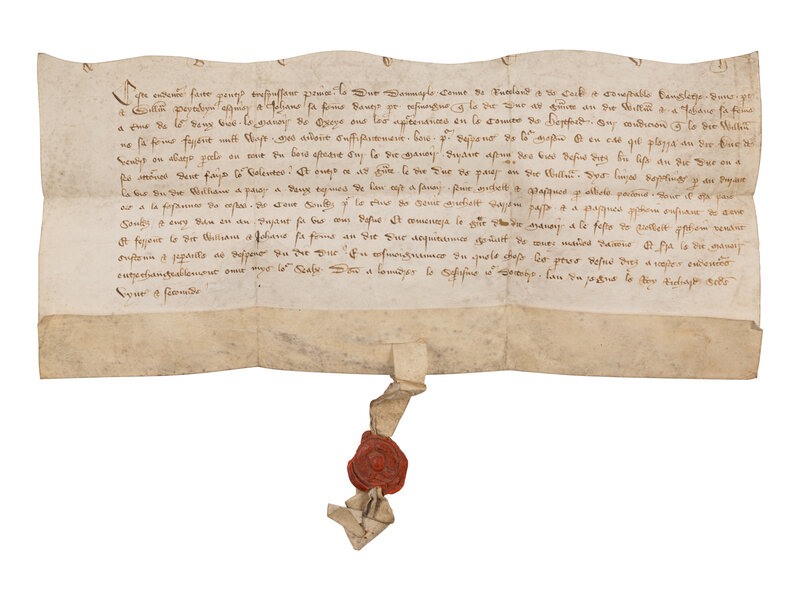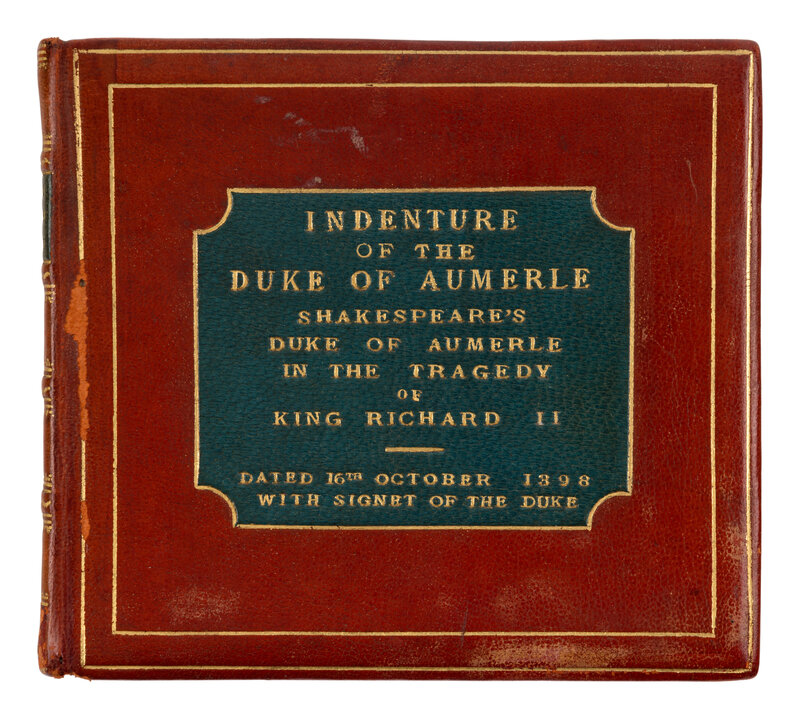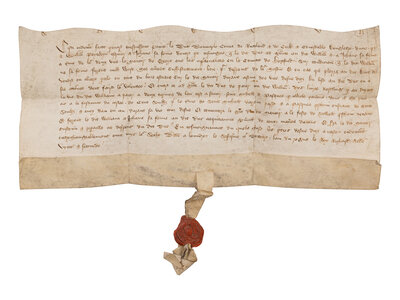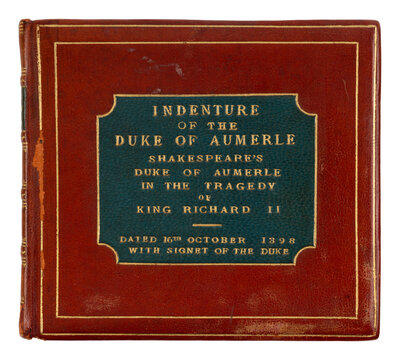Lot 30
IMMORTALIZED BY SHAKESPEARE
Indenture by the Duke of Aumale, to William Peytenin and Joan his wife, in Anglo-French, manuscript on parchment and seal [London, 16 October 1398]
Indenture by the Duke of Aumale, to William Peytenin and Joan his wife, in Anglo-French, manuscript on parchment and seal [London, 16 October 1398]
Sale 2033 - Western Manuscripts and Miniatures
Jun 27, 2024
10:00AM CT
Live / Chicago
Own a similar item?
Estimate
$2,000 -
3,000
Price Realized
$2,286
Sold prices are inclusive of Buyer’s Premium
Lot Description
IMMORTALIZED BY SHAKESPEARE
Indenture by the Duke of Aumale, to William Peytenin and Joan his wife, in Anglo-French, manuscript on parchment and seal [London, 16 October 1398]
Indenture by the Duke of Aumale, to William Peytenin and Joan his wife, in Anglo-French, manuscript on parchment and seal [London, 16 October 1398]
One of the most important members of the royal family during the reigns of Kings Richard II, Henry IV, and Henry V, immortalized by Shakespeare in his play Richard II.
135 x 280 mm. One piece of parchment, written in brown ink in a cursive hand on 13 lines (written space: 90 x 260 mm), indented chirograph at head, parchment pendant with a red seal, 25 mm diameter, housed in a full Morocco box (small wormholes, browned pendant folded, seal worn at edges with loss but image strong, else in very good condition).
Edward of Langley, Duke of Aumale, Earl of Ruthland and Cork, Constable of England, indents with William Peytevyn esquire, and Joan his wife, for the Manor of Oxeye in Hertfordshire without waste of wood on the estate. The Duke also agrees to pay William ₤10 at Michaelmas and Christmas.
Chronicles considered Edward, the 2nd Duke of York (c. 1373-1415), to be a firm favorite of his cousin, King Richard (“there was no man alive whom Richard loved better”). He became a knight at Richard’s coronation in 1377 and was admitted to the Order of the Garter in 1387. He served the King as admiral of his fleet, as emissary, and as a member of the King’s council, fighting with him in battle. For his service he became in 1390 Earl of Rutland, a title he used throughout his lifetime.
As the character Aumerle, Edward occupies a central place in Shakespeare's play, Richard II. He is portrayed as a man who is loyal to King Richard and one of the main conspirators against the newly crowned King Henry IV. Aumerle’s character makes a brief appearance in Henry V before the battle of Agincourt, this time as Duke of York, requesting that he be given charge of the vanguard, which the king grants. “My lord, most humbly on my knee I beg/The leading of the vaward/Take it, brave York/Now, soldiers, march away: And how thou pleasest, God, dispose the day!”
This present document has been authenticated by the addition of the pendant seal of the duke of Aumale. It exemplifies the common practice of cut charters, or “indentatae”: the letters traced at the top of the document would resolve any argument about the authenticity of the deed, upon matching the original and counterpart of the indenture.
Christopher de Hamel has written: “The study of documents as works of human enterprise in their own right is still likely to reveal much about medieval Europe, and about its books, literacy, and the lives of its people” (Diplomatics, Les Enluminures, Paris, Chicago, and New York, 2015, p. 5).
Provenance
(1) Sold by Forum, Fine Books, Manuscripts, and Works on Paper, including Books from the Collection of The Garden Ltd, London, 21 November 2019, lot 200 (₤1,900 hammer).
(2) Private collection, USA.
Freeman’s | Hindman thank Senior Consultant Sandra Hindman and Elliott Adam for their assistance in preparing this sale.
Condition Report
Contact Information



